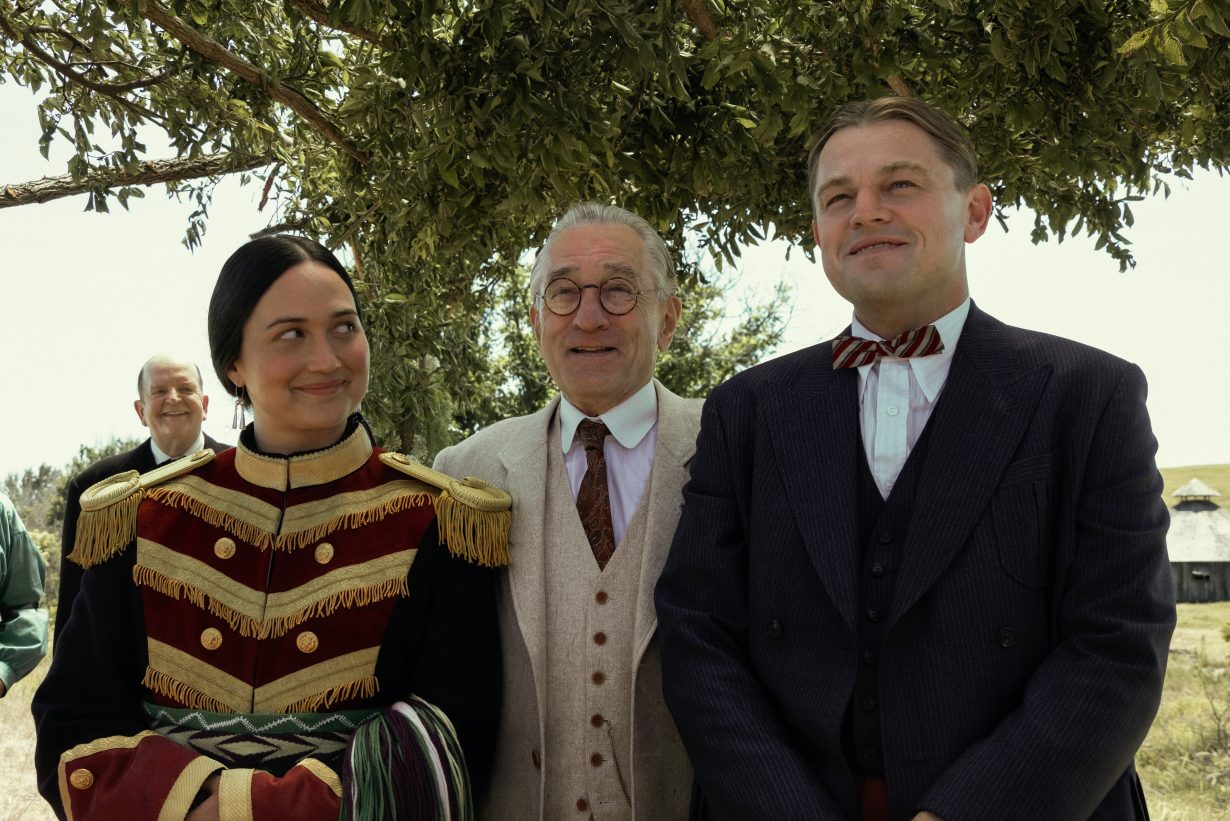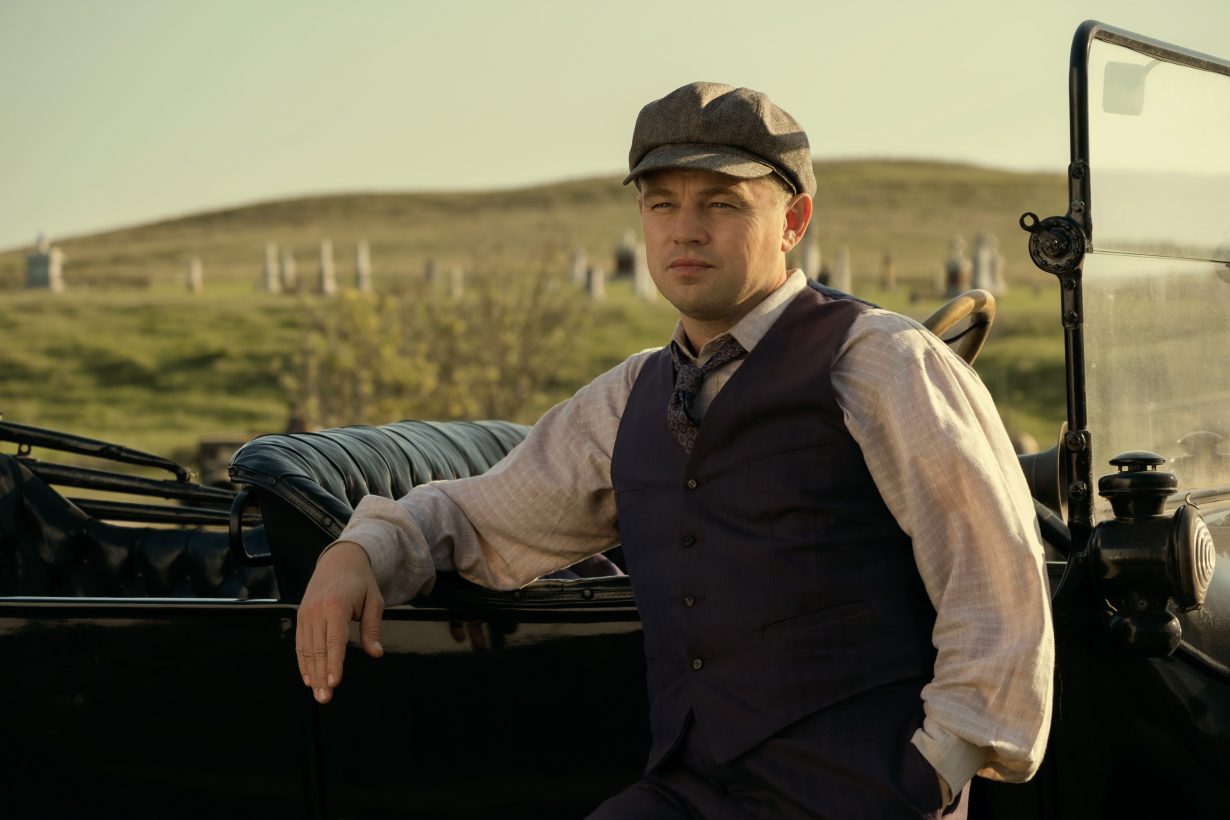Martin Scorsese’s forensic telling of the Osage murders at the hands of white Americans closes in on history
Martin Scorsese’s new three-and-a-half-hour masterpiece Killers of the Flower Moon is not a murder mystery, since there is no mystery surrounding the identity of either party in the crimes depicted – we can guess whodunit from the first few scenes, even if we do not yet know the extent of what they’ve dun. The film is adapted by Scorsese and screenwriter Eric Roth from Killers of the Flower Moon: The Osage Murders and the Birth of the FBI (2017), a weighty nonfiction book by the American journalist David Grann about the murder of more than 20 Osage people by white settlers between 1921 and 1926. After striking oil, the Osage briefly became some of the wealthiest people in America, and where oil and money flowed, white men swiftly followed. Because it was possible for colonisers to inherit land through marriage, many of these white men married Osage women, and ‘mysterious’ deaths began to occur on the reservation. Undiagnosable ‘weakening sicknesses’ ran rampant; ‘suicides’ increased; Osage people became ‘clumsier’, somehow, and more ‘accidents’ occurred. Even all that gleaming oil, black and lightless, could not hide the obvious blood on the inheriting settlers’ hands.
Given the shamefulness of these historic crimes, it seems curious at first that Scorsese has elected to centre the narrative of Killers of the Flower Moon around two of the white perpetrators, a dumb army cook named Ernest Burkhart (Leonardo DiCaprio) and his uncle, a rich rancher called William Hale (Robert De Niro) who insists with mock effacement that his friends and relatives call him “King”. King, who plays at being a philanthropist while scheming like a villain, is venal, beastly, swift to move from queasily ersatz kindness to cool rage; Ernest, his face set in a permanent scowl of bafflement, is the dangerous kind of stupid, easily manipulated and amoral. Sensing that a young unmarried relative might provide an opportunity for financial enrichment, King is quick to suggest that his nephew finds himself a Native wife (“you like red?”), and just as quick to imply – slyly, but still clearly enough that even a man like Ernest gets the message – that if anything should happen to her, et cetera, et cetera. Ernest gets a job as a chauffeur, and that job introduces him to Mollie, a “full blood” Osage woman who quickly reveals herself, in spite of her character’s supporting status, to be the real driving force behind the film. She steps into the picture, and a light comes on. We wonder how long it will take for one of those bloodied white hands to reach out, grasping blindly, to extinguish it.

‘Your face is a cinema face’, Scorsese recalls telling DiCaprio during filming, in an interview with the New Yorker. ‘You don’t need to say that or this, just your eyes do it, move, whatever you do, he just has it—but I do know he likes to speak in films.’ Sure enough, DiCaprio talks and talks in Killers of the Flower Moon, and he does it wonderfully, using our collective memory of his once-cherubic looks to play up Ernest’s almost childlike blankness and incomprehension in the face of evil. It is Lily Gladstone, though, as Mollie, who provides Scorsese with his desired ‘cinema face’ and his extended silences. In her first scene, Mollie is asked to declare herself “incompetent” as part of an undignified interview at the bank, and rather than explicitly explaining what the term might mean, Scorsese simply lets the contradiction between what is being said and the woman who is saying it sit there, underscoring its stupidity and cruelty. To say that the camera loves Gladstone feels inadequate, as the phrase is usually meant to suggest that a person is telegenic, and her star power emanates from somewhere other than her striking beauty. One might say instead that it respects her, and that in those silences, it permits her to fill up the frame with her intelligence and thoughtfulness, like water rushing in to fill an empty lake. Now and then, it is as if her eyes themselves were cameras, looking back at us, implicating us in the things we see unfolding on the screen.

Ernest falls in love with Mollie because she is regal, sharp and lovely. Mollie falls in love with Ernest because regal, sharp and lovely women falling for buffoons is a tale as old as time. Once they are married, Mollie’s sisters start to die one by one, under circumstances whose suspiciousness is obvious, and with each death, the inheritance moves closer to Ernest and, by blood, to King. A residential home is destroyed with a bomb; a drunk woman is shot point blank in the head, and then left out in the woods. Eventually Mollie, too, begins to sicken, commensurate with being given ‘insulin’ that King has provided in order to ‘treat’ her diabetes, and she starts to slip out of the film. ‘The violence is different now, in these later movies’, Scorsese’s editor and platonic-cinematic life partner Thelma Schoonmaker noted earlier this month. ‘And often it’s [depicted] in a wide shot. It’s hardly ever a tight shot, which is very different from his earlier movies, right?’ Here the murders are filmed documentary-style, hushed and clean, with the only moments of transcendence being provided by a few elegant scenes depicting Osage ceremonies and religious imagery. When Ernest asks a local man if he might be interested in working as a hired killer, he demurs until Ernest tells him it’s an Osage target. His reply, delivered casually and calmly, is one of the film’s most viscerally upsetting moments: “Well, that’s different”. We begin to understand that a schism must have formed in Ernest’s mind in order to allow him to simultaneously love Mollie, and arrange the killing of her people – he must be capable of denying the Osages’ humanity, even as doing so denies the humanity of his wife and children. The dominance of King and Ernest in the narrative thus reveals itself to be a structural mirror for the events being depicted: the settlers spreading out, overriding the story underneath, draining the picture of its colour.


Scorsese and Roth do something genuinely moving with the closing lines of Killers of the Flower Moon, and to spoil the directorial conceit through which they are delivered would, I think, be horribly unfair. Needless to say, it could not be made any clearer that in spite of how much time we have spent in the company of pale-faced villains, this is Mollie’s movie after all. Killers is the work of a director who, at eighty, seems to care more than ever about good and evil, and about the moral (or immoral) forces that drive otherwise unremarkable men to dehumanise, brutalise and kill their neighbours. He is at pains to point out that the lives of ordinary civilians – singular and complex; full of thrilling and mysterious potential; coursing gloriously with love and fear and rage and tenderness – are themselves a rich commodity, too valuable to waste. The film’s great, unwieldy length is the tool with which Scorsese drills down into the past and draws forth its hidden darkness, setting out his evidence forensically before us without flash, without glamour, without mercy. Just as Mollie, with her watchful eyes, oversees the violence carried out against her family, we must bear witness too, and if a shorter cut might have carried us along with greater urgency, it would not have thundered at us so decisively: Are you watching now? And now? And now?
Philippa Snow is a writer based in Norfolk. Her first book, Which as You Know Means Violence, is out now with Repeater.
